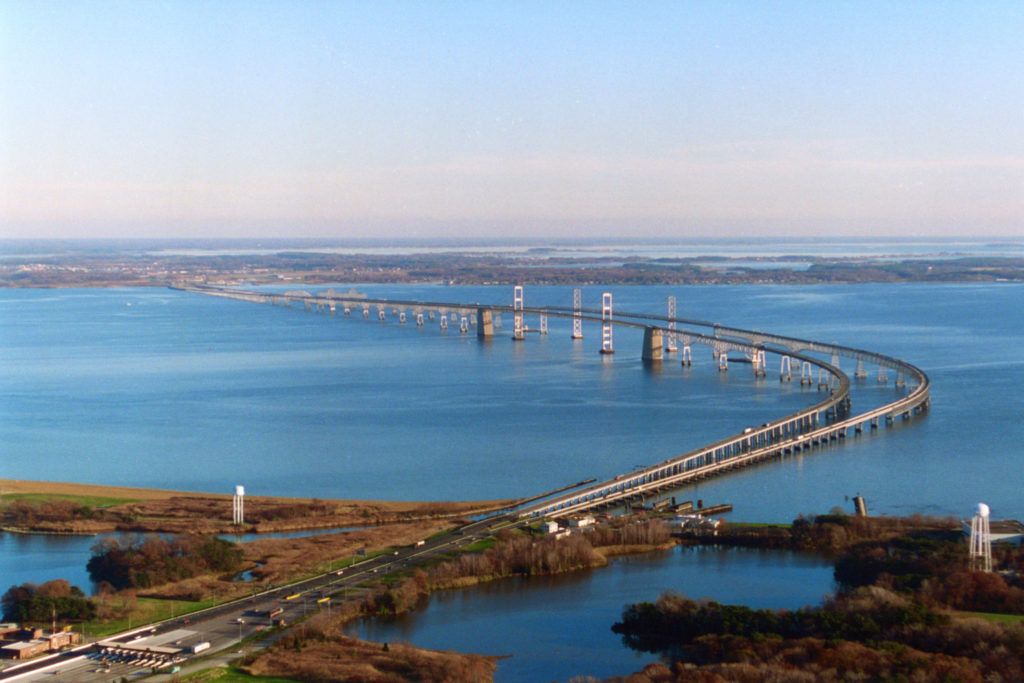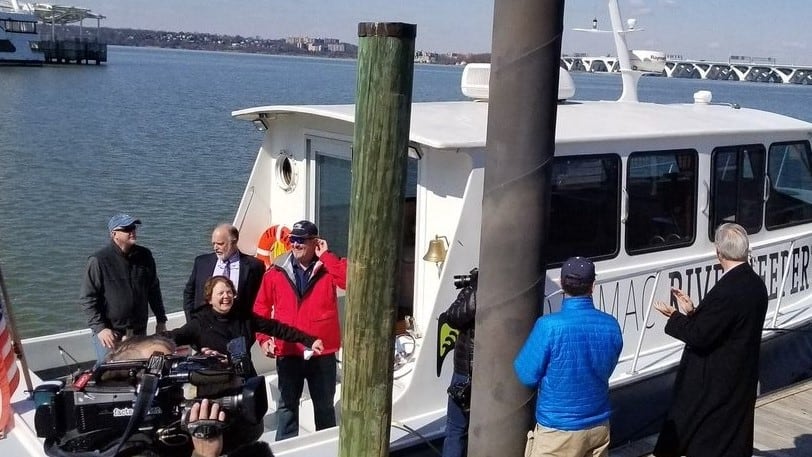With a preliminary study on a possible new Chesapeake Bay crossing complete, Maryland transportation officials recommend building a new span alongside the existing two between Anne Arundel and Queen Anne’s counties. The Federal Highway Administration has given preliminary approval to the plan, too.
Now, Maryland Governor Larry Hogan has announced a second Bay Crossing Tier 2 Study to the tune of $28 million. It will “not only study the new crossing, but also look at solutions for the entire 22-mile corridor from the Severn River Bridge to the 50/301 split,” says Gov. Hogan. He says it’s a critical next step in establishing a new Bay crossing, as traffic worsens on US Route 50 and in the communities leading up to the bridge.
Last Sunday, for example, westbound delays on 50 stretched 12.6 miles back from the bridge around 5 p.m., as many people returned home from the Eastern Shore.
The Bay Crossing Tier 1 National Environmental Policy Act (NEPA) looked at several locations for possible crossings, along with a no-build alternative. It concluded that Corridor 7, the one containing the existing Bay Bridge, was most feasible. You can read the results at baycrossingstudy.com.
Tier 2 will build upon those findings, the Maryland Transportation Authority (MDTA) says, “and identify specific alignment alternatives within Corridor 7, which is two miles wide and 22 miles long, from the Severn River Bridge in Anne Arundel County to the US 50/US 301 split in Queen Anne’s County.”
MDTA Chairman and Transportation Secretary Jim Ports explains, “The Tier 2 study will identify and evaluate a No-Build Alternative as well as various crossing alignments and types—such as a new bridge, a bridge/tunnel or replacement of existing spans.”
MDTA and the Federal Highway Administration (FHWA) says it will engage with residents, communities, officials, and the general public on the Tier 2 study. “As we learned from the Tier 1 Study, the public’s contributions in this process are invaluable,” says Ports.
The MDTA Board is expected to vote on funding for the Tier 2 NEPA later this month. The study would take four to five years to complete. If one of the build routes is selected, there would be another step before final design, right-of-way acquisition, and construction. Building the bridge itself would cost up to $9 billion.
If the Tier 2 study results in choosing a No-Build Alternative, no further action of any kind would be taken, according to MDTA. The Tier 1 study concluded that no-build options like ferry service, rail, bus and transportation system management wouldn’t solve the bridge crossing traffic problem as a stand-alone option.
Tier 2 will look at how these no-build options could be used in conjunction with other alternatives, however.
Additional information and public participation opportunities for the Tier 2 NEPA Study will be posted to baycrossingstudy.com.
Gov. Hogan has prioritized Bay Bridge fixes in recent years, completing a westbound re-decking project and removing toll booths at the bridge in favor of all-electric tolling to keep traffic moving.
The bridge is also getting a new Automated Lane Closure System. It will replace the barrel-and-cone system, making it more efficient to convert to two-way operations and keeping workers safer.
Anne Arundel County Executive Steuart Pittman issued a statement in support of the Tier 2 study, despite his previous opposition of all three Tier 1 Corridor possibilities that were located in Anne Arundel.
Back in 2020 Pittman said, “Any of the three options will be severely disruptive to existing communities and sensitive environmental areas. All three options could destroy parks along the Chesapeake Bay, at a time when we are trying to expand public water access.”
But last week, Pittman responded to Hogan’s Tier 2 announcement, saying, ““I want to thank Governor Hogan for not only moving forward with the Bay Crossing Phase 2 Study, but also supporting our request to include the westbound approach to the bridge, so that the crippling traffic in the heart of our county can be addressed in a comprehensive way.”
In his statement Pittman said he expects to “have a seat at the table” throughout the process, with input on environmental impacts and traffic bottleneck reduction.
-Meg Walburn Viviano




